Introduction
One of the most frequently asked questions we are asked is
“How long will it take to completely erase n-number of n-sized drives”
It all depends…
The answer depends on what the maximum I/O throughput your test system can sustain, factored into how many drives of what capacity you are trying to test, along with what test steps make up your test sequence.
As you can imply from that brief description, calculating an estimated time to complete a given test sequence on a given set of drives is quite a complex process.
Gathering all the information
You can look at the DMM Test Status tab while a test is running to see what the per-drive and the total system-wide throughput is. Then you would use that number, figure out how many blocks of data are going to be moved, what tests will be run, etc to arrive at an estimate.
But honestly that can be a fairly long process, one that is easy to make an early mistake which will skew your final results way off.
The new DMM System Throughput Estimator
In the soon-to-be released STB Suite version 9.2 there is a new feature in DMM that will quickly, easily, and fairly accurately tell you exactly how long any given test sequence will take to run on n number of n-sized drives!
Simply enter your test sequence, select the drives to test, and click the new Sys Thruput button on the bottom DMM task bar. You will see this message
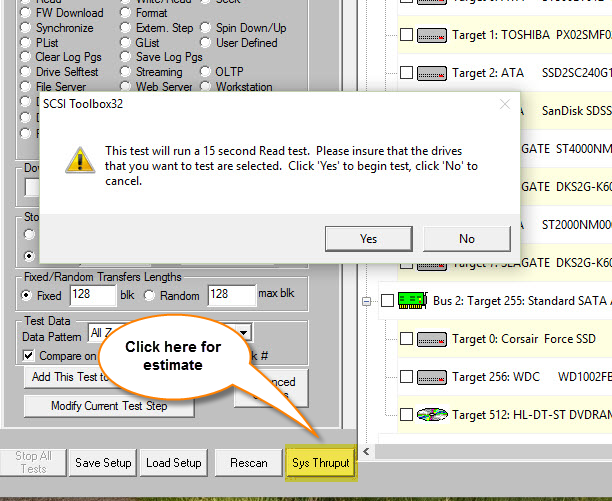
The purpose of the 15 second read test is to non-destructively measure your systems maximum I/O rate in the particular configuration (number of drives on number of HBAs) you are testing.
This number is then used in calculating the time estimate in a complex process which takes into account how many drives you are testing, the capacity of each drive, in the case of a SATA SE operation what the drive reports as the estimated time to complete the SE is, etc.
Then the results of this process are displayed, showing your systems I/O throughput and the estimated time to complete your test sequence.
-Here are a few examples:
Three 500G rotating drives – Sequential Write and Sequential Read of entire drive
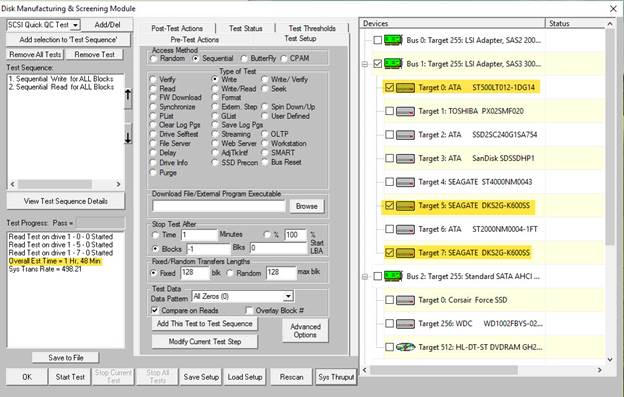
1 4TB rotating drive – Seq Write plus Seq Read entire drive
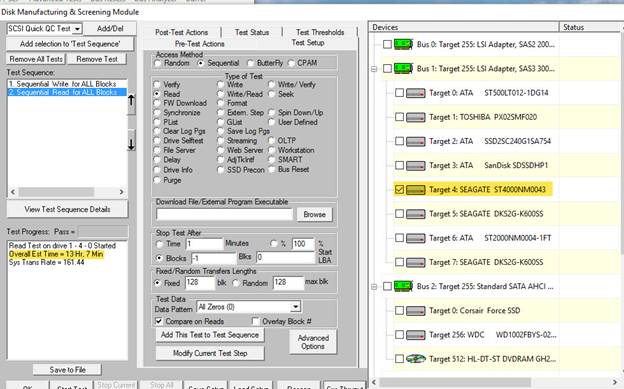
3 SSDs – Seq Write plus Seq Read entire drive
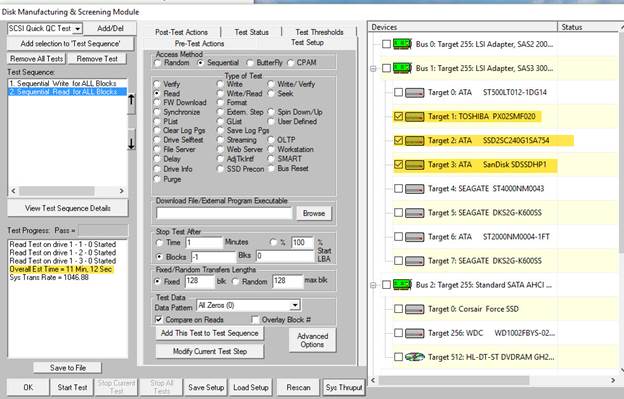
2 SSDs – SATA SE plus Seq Read (verify)
Note: the Seq read verification pass is not really needed
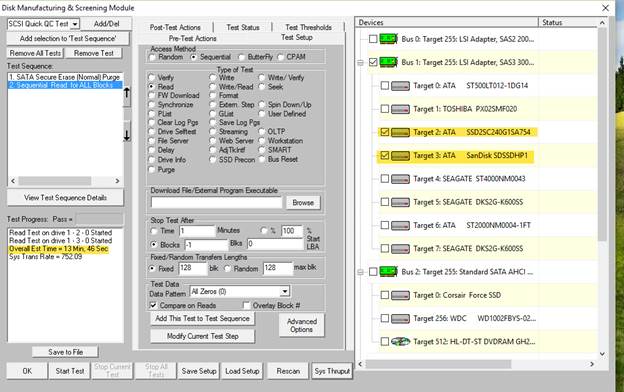
2 SSDS – SATA SE only
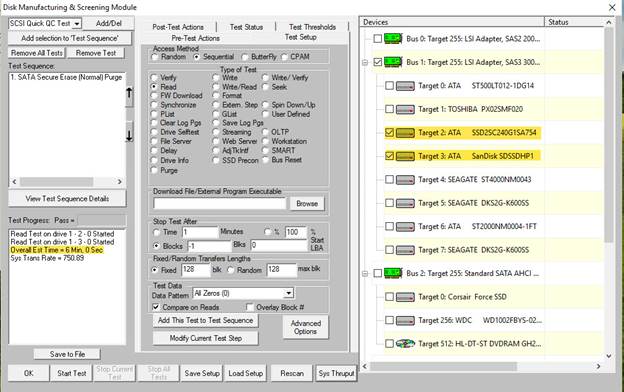
Summary
This new DMM feature will go far in helping you get a good handle on how many drives you are going to be able to process, no matter what the test sequence or drive/HBA arrangement.
Since it takes into account the total system max throughput you will be able to quickly see how spreading your drives across multiple HBAs will affect your test throughput.
This will help you balance your test setup for maximum efficiency and will also make it clear to see when a particular test system configuration is “maxed out” and it’s time to increase the number of test stations to meet your business needs.
Be certain that your Performa coverage is still active!
Simply go into STB Suite Original mode and click Help->About –
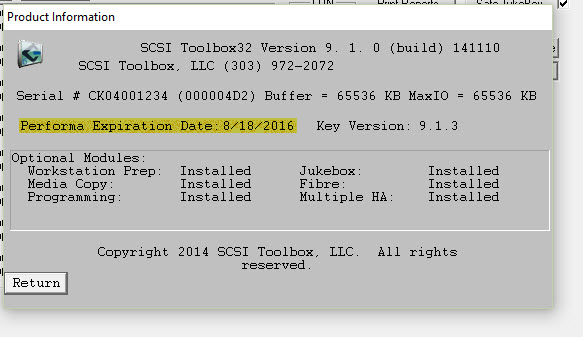
Your Performa expiration date is shown and it is a simple matter of contacting sales@stbsuite.com if it’s time for you to renew.